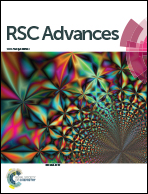Effect of heavy-ion on frequency selectivity of semiconducting polymer/electrolyte heterojunction
Abstract
Heavy ion Nd3+ is introduced into the electrolyte layer to study frequency selectivity of a semiconducting polymer/electrolyte double-layer cell. This cell exhibits long-term depression under low-frequency stimulations and potentiation under high-frequency stimulations by positive triangular pulses, suggesting a conventional learning protocol, i.e., spike-rate-dependent plasticity. The frequency selectivity depends significantly on the input shape due to large ionic size and mass. The input threshold of the frequency selectivity is around the voltage inducing a negative differential resistance (VNDR) influenced by the loading rate. The typical value of VNDR is 0.3 V for a loading rate of 100 V s−1, but VNDR disappears when the loading rate exceeds 1000 V s−1. Besides, the frequency selectivity has not been observed under rectangular pulse input. Moreover, the possibility of bidirectional signal transfer has been tested simply by anti-connecting two individual cells. Our study suggests the possibility to realize signal pruning and synthetizing by changing ionic types.


 Please wait while we load your content...
Please wait while we load your content...